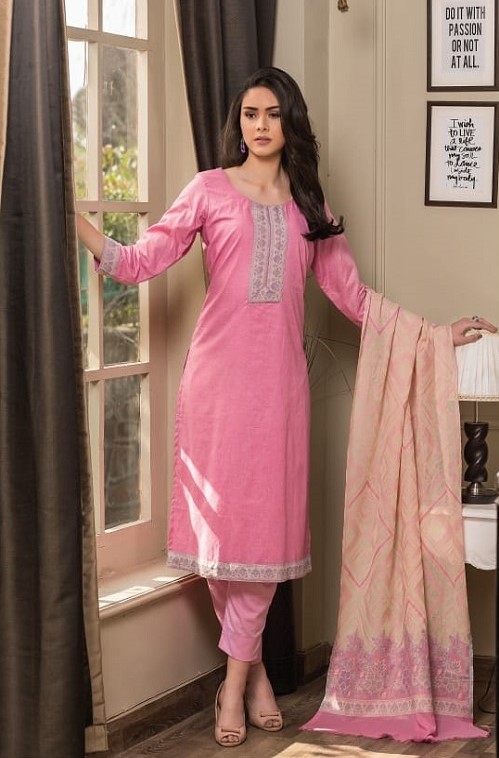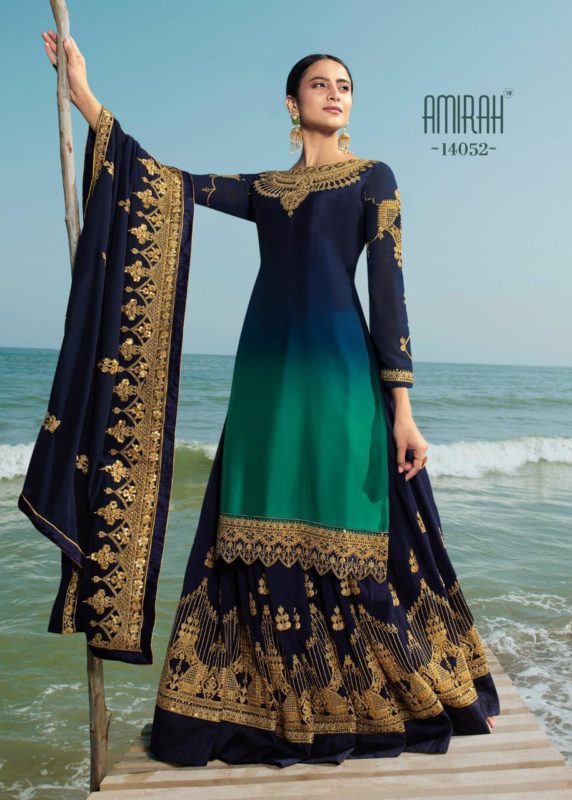Indian Dupatta
Indian Dupatta: Dupatta is a long scarf-like fabric normally worn by ladies in Southern Asia. Ordinarily known as the chunnari, odhni and chunni; Dupatta is viewed as an image of unobtrusiveness and praises the general look of a salwar kameez or lehenga choli. The dupatta is a brilliant swathe of fabric that rouses sentiment, a reality that has been displayed for quite a while, and since the appearance of the film.
A dupatta is an incredibly adaptable garment. It tends to be worn in various manners, with various articles of clothing, in various styles. The heap plans, examples, hues, and improvements are overpowering as for the dupatta!
Every area has its own particular manner of giving the chunari novel embellishments, weavings, textures, and weaves. The most well-known textures for chunari are Cotton, Silk, Chiffon, and Georgette.

Source and History
The customary dupatta has been worn in endless pieces of South Asia for hundreds of years. The individuals of Vedic India wore three articles of clothing – nivil, vasas, and adhivasa. The adhivasa was an article of clothing like the dupatta of present occasions. During the Vedic occasions, the dupatta was worn both by people, in contrast to the current day situation.
The dupatta with time slowly advanced and went on from being a texture for useful purposes to something that commended the general dressing of a lady, for example, planning suits. The surging length has been decreased from over two meters to around two meters.
From the outset, the dupatta was utilized to cover the head and chest area and was worn with ghagra choli or salwar kameez. The intention was humility and furthermore a characteristic of regard towards the family older folks. The well-established act of women covering their heads while setting off to a position of love despite everything that exists.
Assortments
It is puzzling and overpowering to discuss the sort of assortment that the dupatta epitomizes. It wasn’t amazingly some time in the past that the dupatta was a noteworthy part of the convention and worth arrangement of each Hindu family. With time it showed up in the field of design and was exhibited on the big screen by stunning divas. The benevolent pieces of clothing before long experienced a ton of thought to wear various countenances.
A different range gradually sprouted to grandstand the incredible enchantment of the dupatta, which at one purpose of time was just a symbol on standard custom. The assortment in Dupatta originates from various things that go into making one – from the fundamental materials to the surface of the dupatta to its structure – everything adds to the last look of the article of clothing. A few assortments of the dupatta are referenced as follows:
Khara Dupatta: One of the most glorious and rich kinds of dupattas is the Khara assortment, a six-yard long dupatta that is a piece of the conventional Hyderabadi clothing. The ladies from Hyderabad wear this dupatta on their marriage.
Bandhej Dupatta: Of Rajasthani birthplace, the bandh dupatta is one of the richest assortments of the piece of clothing. Enhanced with astonishing embellishments that are weaved onto it utilizing the customary mirror work system, the Bandhej dupatta features the fascinating specialty of the condition of sand ridges and camels.
Chiffon Dupatta: Chiffon dupattas are at the core of the style business today. The interest in dupattas made out of this texture is very high due to the solace of the texture and its characteristic stream.
Aside from the assortment that is obvious in the hues and style of the dupatta, there is significantly more to this generous attire. A fascinating reality about the dupatta is that it has an alternate name in each state and each locale, of which it is a piece. So while in Rajasthan, a dupatta may be called an odhni and a chador in Pakistan, in some other place where there is India it may be known as a chunri or a ghoonghat.
Manner
The rule of wearing a dupatta is that if the dupatta is vigorously embellished it is worn with a basic salwar suit and the other way around. A very enriched lehenga, for example, will be embellished with a dupatta with light work or only an improving outskirt.
Indian Dupatta has been decorated with weaving and shading strategies and components like mirrors, dots, zari, sequins, gold or silver strings, valuable and semi-valuable stones, pearls (both genuine and false), bandhani, chikankari and kantha sewing, square printing, kalamkari and tie, and color.
The Indian dupatta can turn into a style articulation basically by the manner in which it is hung. There are various ways existing from district to area in which the dupatta is worn with a lehenga and choli-the Gujarati way, the Bengali style, the south Indian half saree style, circled richly around the wrist and afterward some more.
It is a basic part in the traditional move kathak, where the dupatta made of sheer material is circled around one shoulder going over the body and tied at the abdomen.
They are most loved by creators as they upgrade the appearance of an outfit. They are utilized as a belt around the midriff to complement it or worn as a turban on the design runway, as handkerchiefs while voyaging or on the seashore, transformed as a scarf around the neck to take after a cowl and the rundown is unending.
The numerous states and districts of India have gifted craftsmen and rich history of workmanship. Henceforth, the nation has the most broadest and impeccable assortment of chunari styles. From the ‘Lehariya’ chunari of Rajasthan to the ‘Phulkari’ chunari of Punjab, the greater part of the states have their own one of a kind style to exhibit.

How to wear an Indian Dupatta?
Since it is worn alongside a salwar suit or lehenga or churidar, by and large, it tends to be adorned by the event. A dupatta can on its own add charm and wonderful to an outfit, without the need for such a large number of frills. Intensely weaved chunaris can be worn with straightforward or plain kurtas or cholis. The straightforward chunaris, notwithstanding, look significantly prettier whenever worn with fragile peering adornments made out of silver, gold, or bronze. Personalization relies upon the shading and the texture of the chunari. The key is to coordinate the chunari as per the texture and the style of the kurta.
It tends to be melded with western wear just as Indian ethnic attire. It is in vogue to group a brilliant dupatta of a solitary shading to coordinate a kurta with some fitted denim pants. Conversely, a printed dupatta in darker shades can counterbalance a white chikankari kurta worn either with a churidar or tights that have gotten well known.
Worldwide Appeal
In the west, the chunari is put in a similar class as that of a scarf. Ladies everywhere throughout the world love wearing Bandhni roused Chunaris or Cotton woven Chunaris with wide Silk outskirts. Brilliant hued structures and themes are famous over the globe. Ladies even wear chunaris with shirts and pants to give their outfits a more Indo-Western intrigue. A few style originators in India try different things with the chunari styles.
Upkeep
Indian dupatta can be washed with a gentle cleanser at home in cool water. For multi-shaded ones that a piece of vigorously weaved groups, cleaning is exhorted. Pressing is to be done in a roundabout way.

